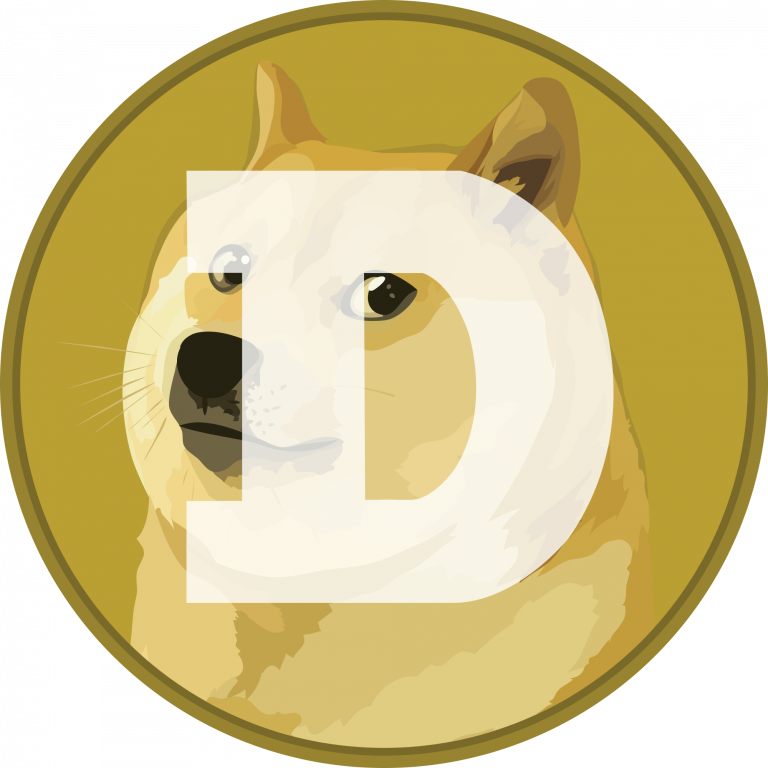History
Dogecoin is famous for being the first meme-coin, an expression used to refer to those cryptocurrencies born from memes spread on the Internet or simply with humorous intent.
Created by Billy Markus, a programmer at IBM in Portland, and Jackson Palmer, from Adobe’s marketing department in Sydney, Dogecoin was born with a joking intent, as a mockery of the most famous cryptocurrencies, primarily Bitcoin, and the wild speculation that featured them.
At the same time, however, Dogecoin was born with the intention of creating a cryptocurrency that could reach a wider user base, becoming the cryptocurrency of the web, as we will explain in more detail later.
Palmer, encouraged on Twitter by a student at Front Range Community College, decided to create a joke cryptocurrency that would be born out of one of the most popular memes of 2013; he bought the domain “dogecoin.com” and developed a splash screen with the cryptocurrency logo and lettering in Comic Sans.
On the other side of the world, Markus, who was trying to program a new cryptocurrency, accidentally discovered Palmer’s site, linked in a chat room, and decided to get in touch with him
A short time later the infrastructure was completed and Dogecoin was launched on December 6, 2013.
It received an excellent response right away, with millions of visits to the site. A few days later, on December 19, 2013, Dogecoin saw an increase of almost 300% in 72 hours only to plummet shortly thereafter by 80%, immediately demonstrating great volatility.
Although it started as a joke, it quickly attracted more and more interest, becoming one of the most well-known cryptocurrencies, with a market cap of nearly $17 billion
How it works
The cryptocurrency of the web
The history of Dogecoin is intertwined with the history of the web over the past 10 to 15 years, and to be fully understood, its origin must be explained.
It all stems from a video
Hence the term was picked up on Reddit and Tumblr
In 2010, Atsuko Sato, a kindergarten teacher, posted on her blog a picture of her dog, a Shiba Inu named Kabosu

The picture soon became part of web culture, becoming a meme.
In this type of meme, called Doge memes, images of dogs were associated with writing in Comics Sans.

Thus, one can understand the close connection between Dogecoin and web culture from its inception.
As mentioned above, Palmer took up this meme, both the Shiba Inu image and the Comic Sans lettering, and initially built the site with these elements.
After its inception, it spread mostly through word of mouth, particularly on Reddit, where a real community of like-minded people came to be, which has grown larger over the years.
The Reddit community is still present

In addition to having originated from a meme, Dogecoin has based part of its fame precisely on a form of communication that leverages typical web modalities, out of all should be mentioned one of the most used memes by the community, the famous “To the Moon!”, which alludes to the high hopes placed by the afficionados in Dogecoin and in its future growth in value.
The phenomenon should not be underestimated, however, because, as time has passed, Dogecoin’s importance has grown more and more, coming to interest prominent figures, among whom should undoubtedly be mentioned Elon Musk who, with his Tweets in favor of Dogecoin, made the cryptocurrency’s price take off.
Seemingly farcical and comical events intersect with particularly relevant events, arriving, to give an example, at the news of Elon Musk who, with his SpaceX, sent to the moon a coin on which was printed the logo of Dogecoin
Not to mention the extent to which Musk’s tweets, joking or otherwise, have serious consequences for the cryptocurrency’s performance.
But Dogecoin’s connection to the web does not end there. The cryptocurrency has found use in various crowdfunding initiatives, carried out by its community, ranging from sponsoring a NASCAR driver

A link, the one with the web, that is difficult to understand for those who approach this world, because it combines the financial world (remember that Dogecoin’s market cap is $17 billion) with the culture of the web, making it difficult to understand how serious it is and how much it is a joke.
We close the chapter with a fairly recent piece of news, that of Tesla, which has begun accepting payments in Dogecoin
Bitcoin, Litecoin and Dogecoin: differences and similarities
Dogecoin’s structure was based on that of an existing cryptocurrency, LuckyCoin
The structure of Dogecoin therefore is very similar to that of Bitcoin, but with modifications made by Google employee Charlie Lee, who would later become Engineering Director of Coinbase, with his Litecoin.
Being totally open-source on GitHub, Litecoin’s client, released on October 7, 2011, was used as the basis for making the less successful Luckycoin and then for Dogecoin.
The main innovation in Litecoin was the change made to the consensus algorithm, again a Proof of Work algorithm, no longer based on the SHA-256 hash algorithm but on Scrypt. We will go into the details of this algorithm in the next chapter.
Although all of the cryptocurrencies mentioned are very similar to Bitcoin, starting with its code, there are differences worth noting.
We will focus on these differences, leaving aside the rest, for which we refer to Bitcoin’s overview (even on Dogecoin’s GitHub it is specified to refer to Bitcoin Core’s documentation
First, the average time to finalize blocks changes, from 10 minutes in Bitcoin to 2.5 in Litecoin, rising to 60 seconds in Dogecoin.
The size of the blocks also changes, going from 1MB in Bitcoin to 25KB in Litecoin to 10KB in Dogecoin.
Another key difference concerns the readjustment of target difficulty for block mining, which in Bitcoin occurs every 2016 blocks, while in Dogecoin it occurs at every block.
Regarding the supply of the three cryptocurrencies, Litecoin had extended the 21 million Bitcoins to 84 million.
The creators of Dogecoin opted instead for an unlimited supply, which characterizes the cryptocurrency as inflationary, unlike Bitcoin, which was created precisely to combat inflation by introducing the scarcity mechanism
Although the initial choice was for a maximum supply of 100 billion Dogecoins, the choice has since fallen to a “deterministic inflation” that proceeds with 10000 new Dogecoins per mined block (thus every minute), resulting in 5 billion new Dogecoins every year.
Consensus algorithm and hardware
Let us now come to the details regarding the consensus algorithm adopted by Dogecoin.
As mentioned, Markus and Palmer copied Litecoin’s code and from it they also took over the consensus algorithm, which was a Proof of Work algorithm based on the Scrypt hash function.
The Scrypt algorithm was devised in 2009 by Colin Percival with the intention of making it more difficult to implement hardware ASICs, i.e., hardware designed specifically for solving these functions.
In Bitcoin, in fact, mining had started with CPUs, later surpassed by GPUs, which in turn were overtaken by hardware ASICs that, in effect, made mining impossible for those who did not have them.
This resulted in a reduction in the decentralization of hashing power, because the whole group of those who mined with GPUs found themselves excluded, unable to compete with those who owned ASICs.
The Scrypt algorithm was devised to make it more difficult to build hardware ASICs, back in the day, because in 2009 Bitcoin was still in its infancy.
A simplified version of the Scrypt algorithm was used by Tenebrix and Fairbrix and later by Litecoin.
It should be noted that Scrypt actually uses several hash functions, including SHA256 itself, however, it requires more RAM than the algorithm used by Bitcoin, so that specific hardware is more expensive, thus attempting to limit the centralization of computational power.
Another reason Lee used Scrypt for Litecoin was so that his cryptocurrency would not compete with Bitcoin, allowing miners to mine both at the same time.
The goal was to make the CPU sufficient for Litecoin mining.
The creators of Dogecoin, intent on making the people’s cryptocurrency, which would go, at least in intention, to involve a larger user base, opted for Scrypt so as to make mining accessible to everyone.
As time went on, however, hardware ASICs arrived for Scrypt as well.
In 2017 came the Innosilicon A4 LTCMaster

Regarding the rewards one gets from mining, a peculiarity of Dogecoin was that the rewards were random, within a minimum and maximum that changed as the blocks progressed:
| Block Height | Mining Rewards |
|---|---|
| 1 – 100000 | 0 – 1000000 DOGE |
| 100001 – 200000 | 0 – 50000 DOGE |
| 200001 – 300000 | 0 – 250000 DOGE |
| 300001 – 400000 | 0 – 125000 DOGE |
| 400001 – 500000 | 0 – 62500 DOGE |
| 500001 – 600000 | 0 – 31250 DOGE |
| 600001 | 10000 DOGE |
Later, however, a fixed reward of 10000 Dogecoin per block was preferred
Governance
Regarding the governance of Dogecoin, it should first be mentioned that when the cryptocurrency was launched in 2014, members of the development team also created the Dogecoin Foundation, with the purpose of “providing governance and support for the Dogecoin project”
After an initial period of activity, however, the foundation became less and less operational until it was abandoned.
In 2021, the Dogecoin Foundation reactivated and was enriched with new members, including Vitalik Buterin, the creator of Ethereum.
The foundation’s website specifies how Dogecoin is a “community-driven, consensus-based and open-source cryptocurrency.”
In short, despite the presence of a foundation, the decentralized nature of Dogecoin is emphasized, not dominated by rigid rules but by community participation.
A Dogecoin manifesto was created in August 2021
The foundation has developed a roadmap of the major changes Dogecoin will see in the future, starting with the wallet.

Dogecoin’s software, which is completely open-source, can be found on Github
In any case, as specified on the guide for contributors

